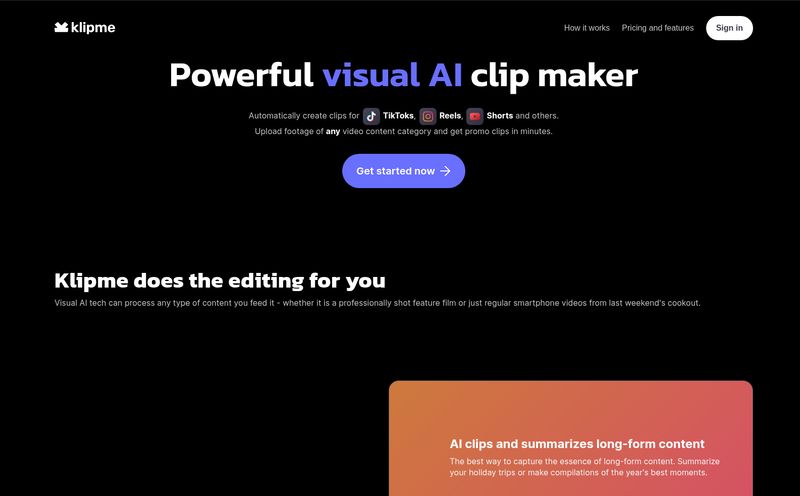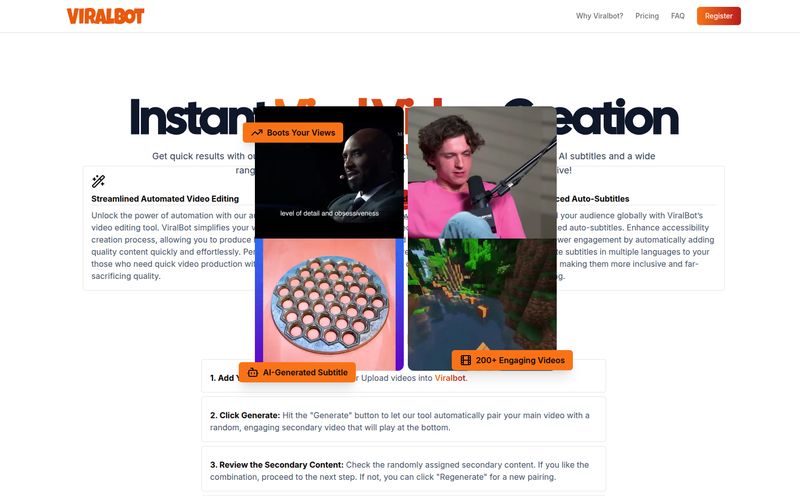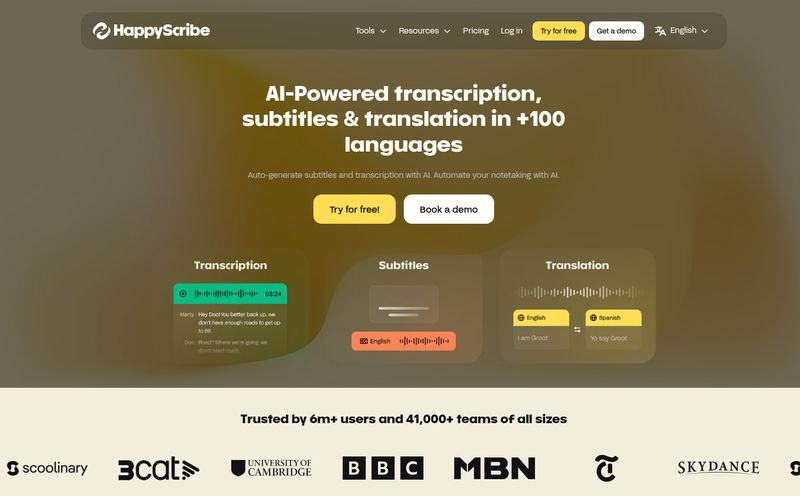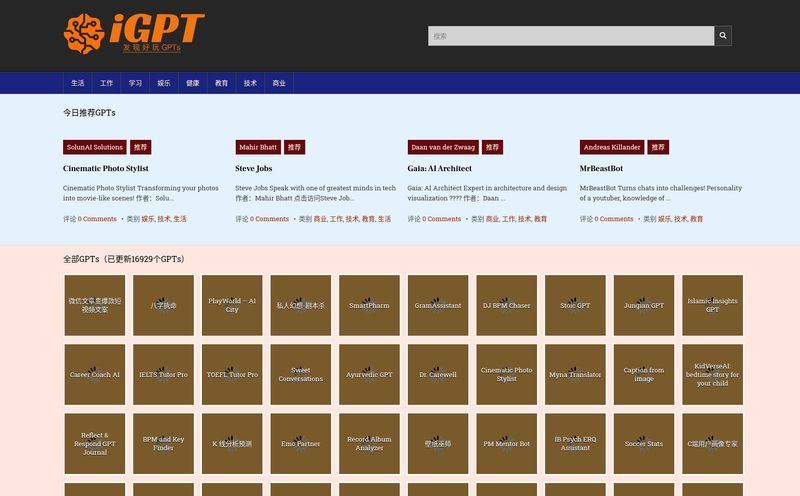If you've ever organized or even just sat through a multilingual meeting, you know the struggle. There's the awkward pause while the interpreter catches up. The inevitable, "Could you repeat that, please?" that throws off the speaker's rhythm. And the cost... oh, the cost of hiring professional interpreters for a multi-day conference can make your eyes water. For years, we've juggled clumsy solutions, from separate audio channels to just hoping everyone sort of gets the gist. It’s been a logistical nightmare.
I've been in the SEO and digital events space for a while now, and I've seen firsthand how a simple language barrier can tank engagement and kill a deal. So when a tool like PolyPal comes across my desk, claiming to offer real-time, AI-powered live translation for pretty much any setting, I'm both skeptical and incredibly intrigued. Is this just another tech gimmick, or is it the digital Babel fish we’ve all been waiting for?
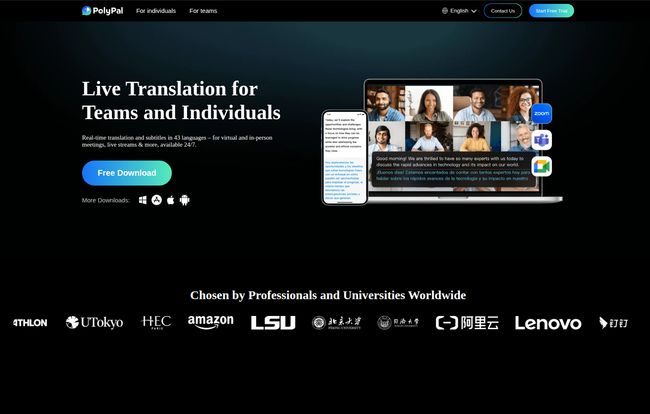
Visit PolyPal
So, What Exactly is PolyPal?
At its heart, PolyPal is a live translation service designed to work seamlessly across virtual platforms like Zoom, Teams, and Google Meet, as well as for in-person, on-site events. The name itself is a pretty clever mashup of "Polyglot" (a person who speaks many languages) and "Pal" (your friendly helper). And honestly, that's a good way to think about it. It’s like having a hyper-intelligent friend in your pocket who can instantly translate what's being said.
It's not just about translating one or two major languages. The platform boasts support for an impressive 43 languages and 95 different accents. Think about that for a second. That's over 3,000 possible language combinations. We're talking about the difference between a Castilian Spanish accent and a Mexican one, or a Scottish brogue versus a Texan drawl. This level of detail is what separates a genuinely useful tool from a frustrating one.
The Features That Actually Matter
A long list of features is one thing, but how do they translate (pun absolutely intended) into a better experience? From my perspective, a few things really stand out.
Real-Time Translation That Feels... Real
PolyPal claims a latency of less than one second. In the world of live events, that's everything. Anything longer and you get that weird, disjointed feeling where the subtitles or audio lag behind the speaker. This low latency aims to make the conversation feel natural and fluid, not like you're watching a poorly dubbed foreign film. For live Q&A sessions or fast-paced training workshops, this is non-negotiable.
Inclusivity on a Grand Scale
Here's a cool trick: for on-site events, attendees can simply scan a QR code. That's it. Up to 500 people can scan that single code and instantly start receiving live, translated subtitles on their own devices. No more renting out expensive headsets or worrying if you have enough equipment. Everyone uses the device they already own. This is a game-changer for large conferences, university lectures, or any big broadcast. It lowers the barrier to entry and makes events instantly more accessible and inclusive.
Who is This Really Built For?
While the website says "For Teams and Individuals," its power is most obvious in professional settings. I see this being a massive win for a few key groups:
- Global Corporations: For all-hands meetings, quarterly updates, and cross-departmental training, this breaks down internal silos. A team in Tokyo can collaborate with a team in Berlin as if they were in the same room.
- Event Organizers: Imagine hosting an international conference and being able to offer live subtitles in dozens of languages at a fraction of the cost of hiring human interpreters. This widens your potential audience dramatically.
- Educational Institutions: Universities like LSU and HEC are already listed as users. It’s perfect for international student orientations, guest lectures from abroad, and online courses with a global student body.
Basically, if you're communicating with an audience that doesn't share a single common language, this is for you.
The Big Showdown: PolyPal vs. Human Interpreters
Now, the elephant in the room. Does this replace human interpreters? My take: not entirely, but it fundamentally changes the equation. A skilled human interpreter can capture cultural nuance, sarcasm, and tone in a way that AI is still learning to. But PolyPal wins big in other areas.
I've put together a quick table to show where I see the main differences:
| Aspect | PolyPal (AI Translation) | Human Interpreter |
|---|---|---|
| Cost | Significantly lower. A single software solution covers many languages. | High. Billed per interpreter, per language, per hour/day. |
| Scalability | Massive. Supports up to 500 people and 40+ languages simultaneously. | Limited. Requires a separate interpreter for each language pair. |
| Availability | On-demand, 24/7. | Requires advance booking and is subject to availability. |
| Nuance & Context | High accuracy for direct translation but can miss subtle humor or cultural idioms. | Excellent at capturing tone, intent, and cultural context. |
For most business meetings, webinars, and training, the cost and scalability benefits of PolyPal are just too compelling to ignore.
Let's Be Real: The Potential Downsides
No tool is perfect, and it’s important to go in with open eyes. Based on the tech and my own experience with AI tools, there are a couple of things to keep in mind.
First, it's all powered by the internet. A spotty or unstable connection will, without a doubt, affect performance. If you're hosting a critical event, a hardwired, stable connection is a must. Second, while the accuracy is reportedly high, AI can still make mistakes. Complex jargon, very thick accents, or people talking over each other could lead to occasional translation errors. It’s gotten amazingly good, but its not perfect. You might lose a bit of the speaker's unique personality in the translation.
How to Get Started and What's the Price?
This is where it gets a little B2B. There isn't a public pricing page on their site, which is common for SaaS solutions targeting enterprise clients. Pricing likely depends on your specific needs—the number of users, event size, frequency of use, etc.
The good news is they offer a Free Trial. I always say, the proof is in the pudding. The best way to know if it's right for you is to try it yourself. You can sign up for a trial or book a demo directly on their website to get a custom quote and see it in action.
Frequently Asked Questions about PolyPal
- 1. What platforms does PolyPal actually work with?
- It's built for the big ones. You can use it with Zoom, Microsoft Teams, and Google Meet for your virtual meetings and webinars. It also has the QR code solution for live, in-person events.
- 2. Can I get a transcript of my meeting?
- Yes, the FAQ on their site mentions that PolyPal offers free transcription services in addition to the live translation. This is a great bonus for creating meeting minutes or content for later use.
- 3. How does it handle multiple speakers with different accents?
- This is its specialty. The AI is trained on 95 different accents, so it's designed to differentiate and accurately translate even when speakers have varied dialects within the same language.
- 4. Is my data secure when I use PolyPal?
- They seem to take security seriously. Their site highlights a "Privacy First" approach and mentions that you can keep files local, which is a big deal for companies with sensitive information. They don't store or sell your data.
- 5. Is it difficult to set up?
- From the looks of it, no. For virtual meetings, it integrates with the platforms you already use. For live events, it's as simple as sharing a QR code. The idea is to make it as user-friendly as possible, removing the usual technical headaches of event tech.
My Final Thoughts
I'm genuinely excited by tools like PolyPal. It’s a practical solution to a problem that has plagued global business and education for decades. It's not about making human connection obsolete; it's about enabling it. By removing the friction of language, it allows people to focus on what really matters: the ideas, the collaboration, and the shared goals.
Is it a silver bullet that will solve every communication challenge? Of course not. But it’s a massive step in the right direction. For any organization looking to improve its global reach, increase participant engagement, and cut down on logistical costs, PolyPal is, without a doubt, worth a serious look. The future of meetings is here, and it’s a lot more understanding.
